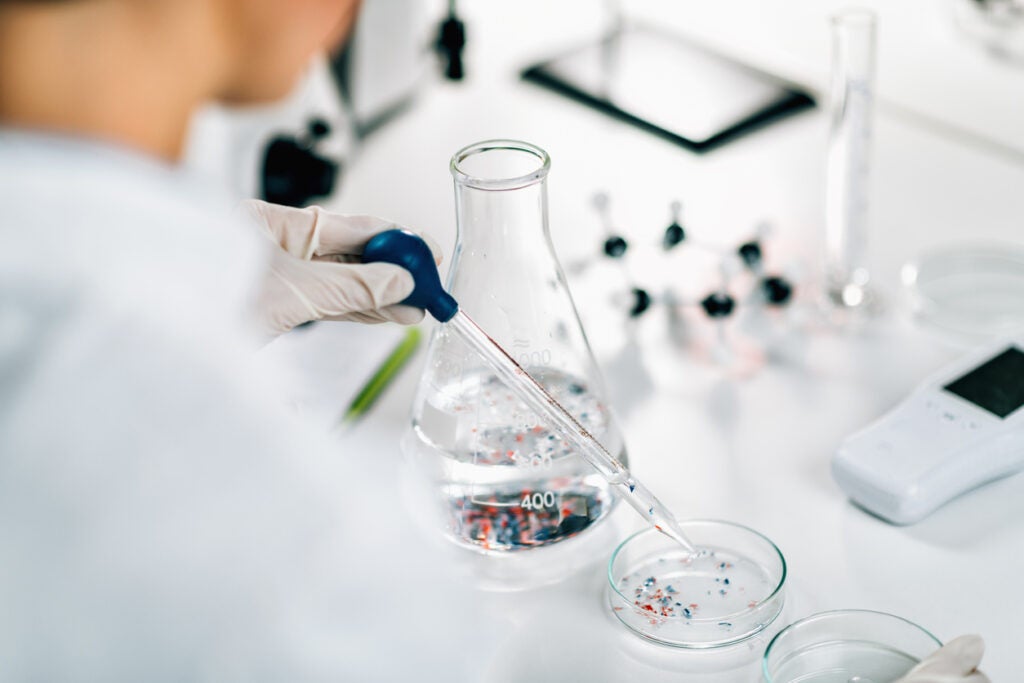Cross-contamination is a major issue in any lab setting as it can lead to inaccurate results, compromised experiments and even safety risks. Cross-contamination can occur when samples, equipment, or instrumentation are not properly sterilised between uses, and it can be a challenge to prevent it in a busy lab environment. This blog will cover some tips to help avoid cross-contamination of chemicals in the lab

1. Cleaning and sterilising work surfaces
The cleaning routine in the lab must be thorough and effective.
How cleaning solvents are stored and dispensed can have a significant impact. For example wash bottles such as the Azlon Round Integral wash bottle, which is designed with an integral spout and precision tip, can be used safely and efficiently - minimising contamination as the inner tube doesn’t need to be removed and placed on the workbench when the bottle is refilled.
Another option is the Azlon® Wide neck wash bottle, specifically designed for easy and spill-free filling, reducing the amount of unnecessary mess and clean-up on your workstation. All bottles can be customised for easy identification, whether it's for water, acetone, methanol or other solutions.

Here are a few tips to help keep the lab and workstations clean:
- Clean up any liquid or powder spills as soon as they occur. All laboratory spills should be treated as high priority as they can result in serious injury or danger to those around, as well as contamination.
- Return all laboratory products to their correct place once used – it helps with overall efficiency and smooth operation of the laboratory.
- After cleaning glassware in particular, make sure it is safely stored to minimize breakages.
- Leave the workbench clean at the end of the day. It will save time the following day when work is resumed and reduce the chance of contamination impacting future processes.
2. Avoiding cross contamination through clear identification
It is vital that sample collection and storage devices within the laboratory are labelled where appropriate to enable contents to be quickly and easily identified. Easy sample identification can be supported in several ways. It can be done by using colour-coded caps, which can be used on storage vials for example, the use of barcoding as well as clear written labels on sample devices where appropriate.
DWK's Silicone Lids also use colour coding to provide a highly visual, identifiable way of covering laboratory containers of different shapes and sizes, especially containers that typically do not have associated lids or closures, such as beakers or Erlenmeyer flasks.

3. Using protective equipment to protect work from cross contamination
It’s best practice to wear gloves even when not handling hazardous materials. They can help protect your skin from chemicals or other hazards you handle, and in some instances, they can also be used to protect the work from contamination. After use, gloves should be removed, appropriately disposed of, and replaced with a fresh pair, to further reduce the risk of contamination in the lab.
Laboratory hoods (laminar flow, biosafety cabinets) are ventilation devices used widely in the laboratory to provide controlled areas of work to help protect both the laboratory personnel and the materials they are working with. These are especially used when specific work depends on a sterile technique or involves pathogenic or other highly sensitive material that could be easily contaminated.
4. Washing and rinsing glassware
When it comes to keeping on top of cross-contamination in the laboratory, you will need to clean well and often. Always clean appropriate laboratory equipment between uses, with frequent cleaning of work surfaces and other sterile areas as part of this routine. Running regular autoclave cycles is also recommended to ensure sterilisation of containers. To avoid the potential of contamination occurring ensure you follow the relevant instructions for the autoclaving process itself, including the duration of the cycle and how to prepare equipment properly. Not all items can be autoclaved, especially plasticware made of polymers unsuited to autoclave temperatures. Check out one of our other blogs for a list of polymers and their compatibility. When autoclaving is not possible, a thorough cleaning process should be undertaken instead.
All blog information was provided courtesy of DWK; all our Quickfit glassware by DWK can be found here
For more information please contact us via our website, or by filling out the form below







